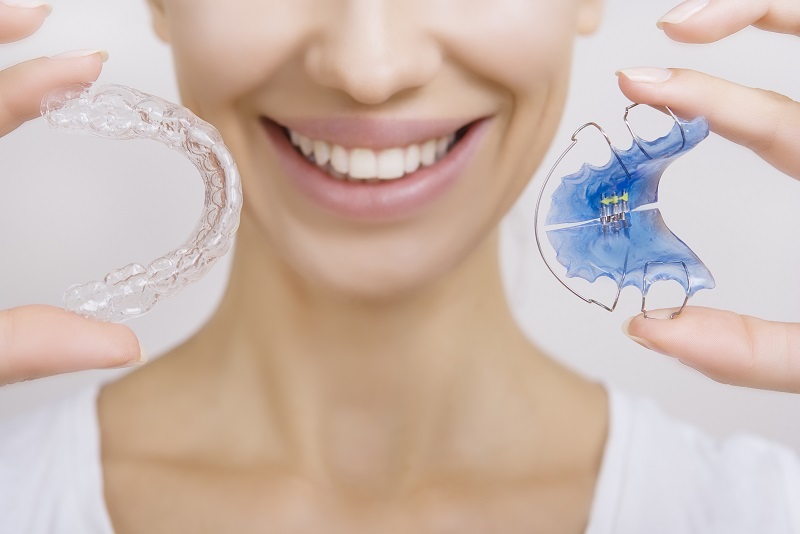Technology today is fast, much faster than it was before the turn of the new century. Take the computer chip, as an example. It took more than a century from the discovery of silicon to the first-ever integrated circuit by Fairchild Semiconductor.
However, it took only sixty years from that first integrated circuit to the latest Core i9 chip. The swiftness of development today covers all industry; aerospace, shipping, space, to name a few. Orthodontics, in dentistry, is not excluded, to everyone’s delight.
We will not stretch our wings and take flight because we have an issue that needs to be illuminated. But to get to the bottom of this, we have to set thing correctly because we cannot compare the two brands.
There are different types of retainers which we will touch lightly.
Removable retainers. Dentists and dental technicians may make this type of retainer of {1) wire with plastic or acrylic, or {2} clear, molded plastic retainer.
With the first sub-type, which has a name after its inventor is called a Hawley retainer. This came into fashion in the early part of the twentieth century. The second sub-type is called an Essix retainer which came into the fray in late twentieth century.
The Hawley retainer, although the older type, can be adjusted and repaired if broken because of its material. Although people will know that you are wearing a retainer since the end wires will curl up to the front as a clamp to steady it and causes irritation to the lips at the start, Hawley retainers last longer than other removable retainers.
The Essix retainer, on the other hand, needs to have a mold of the patient’s teeth to follow the specific dental contours since the clear plastic will be molded before it could be attached. Obviously, this type of retainer has more comfort than a Hawley for this would be like a glove to a hand.
Because of the material, this will discolor in the long run. Unlike the Hawley, the Essix cannot be repaired nor can it be adjusted. In time, the properties of plastic will change, and the retainer will be susceptible to liquid retention that can cause cavities.
It is also a good practice for both sub-types that it must be clean always, so daily cleaning with lukewarm water and a slight mix of denture cleaner will do the trick.
The Vivera retainer belongs to the removable Essix type which happens to be the latest model of all Essix.
Permanent retainers. Sometimes referred to as bonded, fixed or lingual wire retainers, the Memotain belongs to this type of retainer. This type of retainer uses solid or braided wire that is cemented or bonded to the back of a patient’s front teeth to prevent movement of the teeth.
Permanent retainers are usually chosen by dentists for the lower teeth, and because it is cemented, only orthodontists can detach the retainer. Permanent retainers are also chosen when the dentist thinks the patient may likely relapse back to misalignment.
Being at the back, permanents are invisible to the public. A slip up in following instructions to wear retainers will not happen with permanents unlike removable ones. It will not affect your speech unlike the bulky Hawley, and you don’t stand a chance in losing it, naturally.
Memotain Retainers. The newest retainer overall, across the board. The German company, CA Digital, have come up with a new version, Memotain 2.0, which came out about three years ago. It is the product of ingenious technology.
Using computers that are stocked with software for computer-aided design and manufacturing, the company managed to make a wire so thin, the thinnest ever for retainers, it will make you declare that it will break.
It will break or fracture, admittedly, but at a whooping one (1%) percent of its almost forty thousand kits sold so far. This makes conventional retainers look pale with a fracture rate of ten (10%). Several factors affect the Memotain retainer fracture rate but not exclusively by the wire itself.
The name of the wire is Nitinol that is a metal alloy of nickel and titanium. One of its unique property is super elasticity or pseudo elasticity where you can stretch it under stress, and even up to breaking point.
Another exceptional property of this alloy is what they call “shape memory.” This alloy will revert back to it original shape once heat is applied. Because it is so thin, the wire is pliable to conform to the contour of the teeth. Although it is very thin, there is not enough heat inside the mouth to trigger memory reversal.
Both are great products and it really all boils down to patient’s preference along with the factors that affect the choice.
